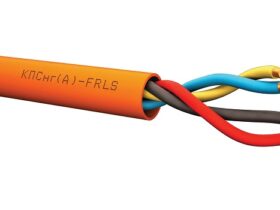Owners of small gardens have to work hard not only for the rational organization of decorative flower beds, but also in planning an orchard or vegetable garden. If the area is very small, the classic beds — the allocation of a separate site for each crop — force you to abandon the cultivation of some plants in favor of others. But in fact, it is better to look for a way out in the skillful organization of the process of using free soil..
A bountiful harvest can be obtained even in a very small garden bed. To do this, it is not at all necessary to break the rules for planting plants, choose only a few of your most favorite vegetables and forever say goodbye to dreams of growing the rest. The modern approach to organizing a garden, instead of selective cultivation, suggests doing something completely different — combining different crops on the same bed, mixing them with each other, and, thanks to the skillful combination of plants with different fruiting periods and growth duration, achieve the same results when using more modest areas.
In order for a small area of a vegetable garden to turn from a problem into a source of endless successful experiments with a new organization of the process of growing vegetables, herbs and herbs, you need to carefully plan the process of maintaining a garden in two parameters:
1) organize the correct placement of plants in the garden;
2) successfully combine the terms sowing seeds and planting seedlings.
The greatest place in small gardens, as a rule, is occupied by paths. Where soil is scarce, it is better to refuse paved or any other permanent paths. At the same time, on the convenience of using the beds, the rejection of the paths will not be smeared: the thickness of the row spacing is sufficient for the passage, it is necessary for almost all early plants, and after assembling them, you equip temporary paths for caring for vegetables. Use all available space to plant the first early plants that you harvest in early summer. By embedding the remnants of these crops in the soil, you can mulch one of the rows with mowed grass, straw, crushed bark or sawdust, getting an excellent temporary path..
To organize a vegetable garden without paths, it is enough to select two crop changes for each garden bed: early plants and vegetables that you will plant after harvesting them. At the same time, an early crop and vegetables can be combined in groups with other plants with similar fruiting periods, or planted independently. Among the early plants, the best candidates for a trackless garden are early ripening mustard varieties, dill, salads, radishes, and spinach. As for the «second wave» of vegetable crops, the choice is more than extensive. You can both plant classic zucchini, tomatoes, cucumbers, cabbage, and any other vegetables at your discretion.
There are two strategies in creating a vegetable garden without permanent paths:
1. Planting plants with row spacings that allow free movement.
2. Planting a «transitional» culture, in the place of which trails are then laid.
In the first strategy, it is better to plant the first plants in grooves, or rows located at a distance of about 40 cm from each other along the edge of the garden and where you would like to lay paths in the future (for example, every 4-6 rows, so that it is convenient to reach up to plants in the middle of each section), and about 15-20 cm between the «inner» rows. It will be convenient for you to walk between sections with denser rows of early crops, and after harvesting them, you will not need to spend time creating additional paths, and you can immediately use the area with dense rows for planting vegetable plants (after loosening and leveling, of course). And one more little tip: after you harvest the first inhabitants of the garden, plant the remains of plants in the garden as compost and fertilizer and plant vegetables in their place without compaction of the recommended distances between the bushes. To make wide aisles on the beds more functional, immediately mulch them with any loose materials, for example, mowed grass..
There is another strategy for creating a garden without paths: plant one «transitional» plant in sparse rows, which, after harvesting an early harvest, can be turned into thin paths. Usually spinach is used as such a «path» culture. It is sown in early spring in rows at a distance of about 40-50 cm from each other. Between them, early crops are sown, which will gradually ripen. As the leaves are harvested, the overripe residues of spinach are embedded in the soil, and then the path is leveled and vegetable mulch is spread over it. After harvesting the main early crops, vegetables are planted in their place, and spinach rows are turned into convenient paths.

















Оставить коммент.